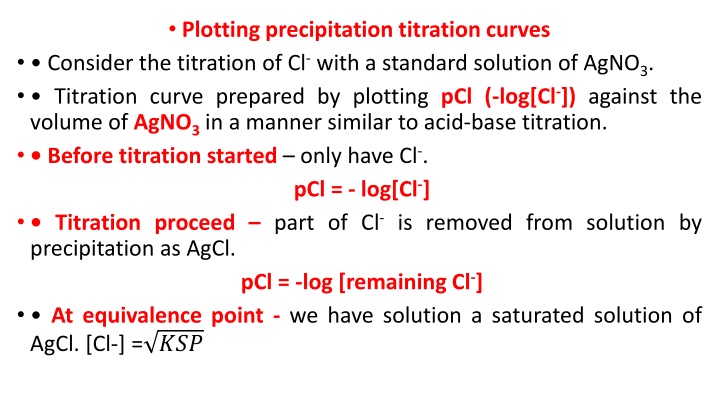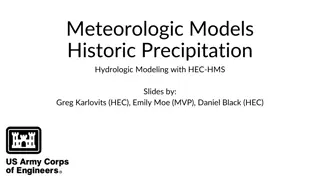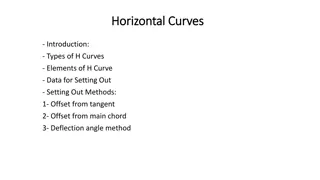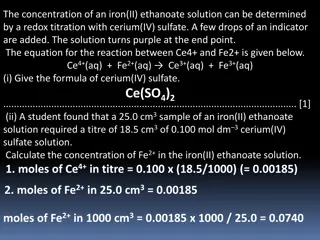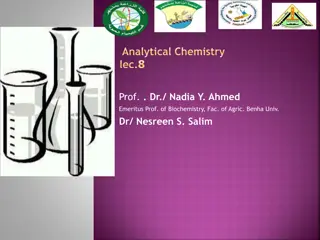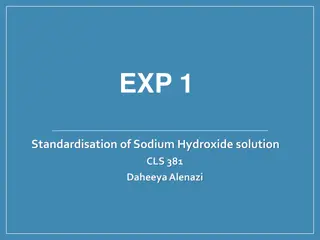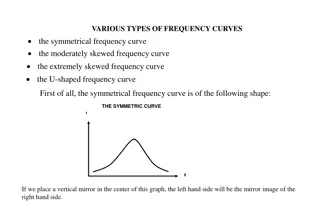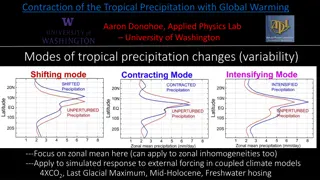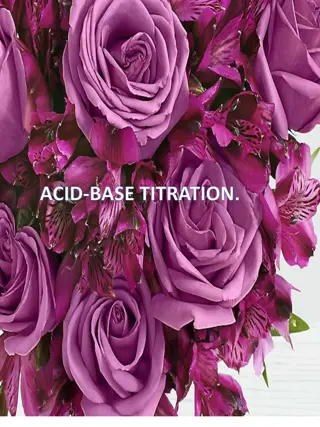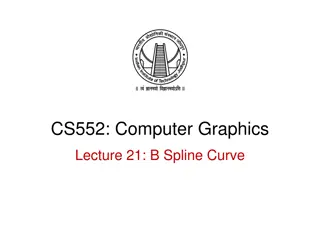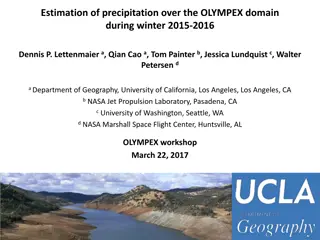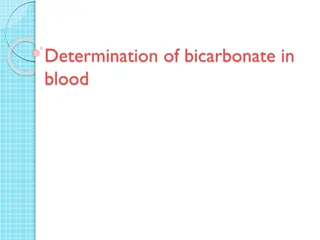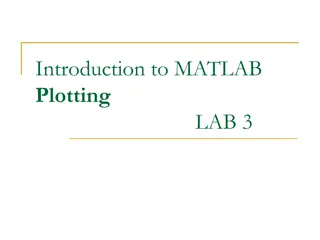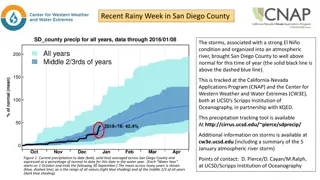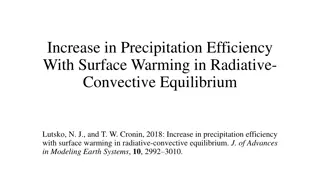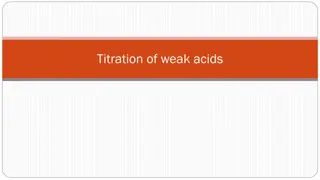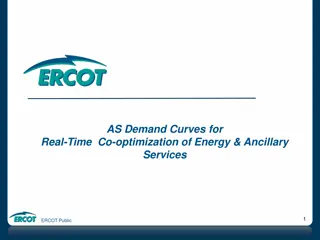Plotting Precipitation Titration Curves for Cl- with AgNO3
Consider the titration of Cl- with AgNO3 using pCl against volume of AgNO3 added. The titration curve is influenced by Ag+ and Cl- concentrations, as well as the Ksp value. Derive a titration curve for the titration of 50ml of 0.1M NaCl with 0.1M AgNO3 having a KSP of AgCl as 1.82x10-10.
Download Presentation

Please find below an Image/Link to download the presentation.
The content on the website is provided AS IS for your information and personal use only. It may not be sold, licensed, or shared on other websites without obtaining consent from the author.If you encounter any issues during the download, it is possible that the publisher has removed the file from their server.
You are allowed to download the files provided on this website for personal or commercial use, subject to the condition that they are used lawfully. All files are the property of their respective owners.
The content on the website is provided AS IS for your information and personal use only. It may not be sold, licensed, or shared on other websites without obtaining consent from the author.
E N D
Presentation Transcript
Plotting precipitation titration curves Consider the titration of Cl-with a standard solution of AgNO3. Titration curve prepared by plotting pCl (-log[Cl-]) against the volume of AgNO3in a manner similar to acid-base titration. Before titration started only have Cl-. pCl = - log[Cl-] Titration proceed part of Cl-is removed from solution by precipitation as AgCl. pCl = -log [remaining Cl-] At equivalence point - we have solution a saturated solution of AgCl. [Cl-] = ???
Excess AgNO3added excess Ag+. [Cl-] is determine from the concentration of Ag+and Ksp. [Cl-] = Ksp/[Ag+] Plots of titration curves are normally sigmoidal curves consisting of pAg (or pAnalyte) versus volume of AgNO3solution added. A useful relationship can be derived by taking the negative logarithm of both sides of a solubility-product expression. chloride, ??? = [ ??+] [?? ] ?????? = log( [??+] [?? ] ) -?????? = log [??+] + ( ??? [?? ]) ???? = ???++ ??? Thus, for silver
EX. Derive a titration curve for the titration of 50ml of 0.1M NaCl with 0.1M AgNO3, KSP AgCl = 1.82x10-10? Notes : 1) In precipitation titration we are using molar and formal conc. and we are not using normal conc. 2) Precipitation titration methods are used to determine halogen ions. 3) Precipitation titration curves are plotted as : 4) Precipitation titration curve is influenced by the concentrations. of Ag+ and Cl- 5) Precipitation titration curve is influenced by KSP value (completeness of reaction). when the KSP value is small the titration curve is perfect.
Ansewer of example : a) before adding AgNO3 : NaCl Na++ Cl- 0.1 0.1 0.1 pCl = - log [Cl-] = - log 0.1 = 1 pAg = zero b) after adding 10 mL of AgNO3: NaCl (50x0.1) (10x0.1) 0 5 1 0 4 0 1 + AgNO3 AgCl + NaNO3
[Cl-] = 4 pCl = - log 6.7x10-2= 1.17 [Ag+] = [Cl ]=1.82?10 pAg = - log 2.7x10-9= 8.57 c) when adding 49.95ml of AgNO3: 60= 6.7x10-2 10 2 =2.7x10-9 ??? 6.7?10 NaCl + AgNO3 AgCl + NaNO3 (50x0.1) (49.95x0.1) 0 5 4.95 0 0.05 0 0.05 [Cl-] = 0.05 pCl = - log 5x10-5= 4.3 [Ag+] = [Cl ]=1.82?10 99.95= 5x10-5 10 ??? 10 =0.36x10-5 pAg = - log 0.36 x 10-5, pAg = 5.44 5?10
d) at equivalent point , when adding 50ml of AgNO3: NaCl + AgNO3 AgCl + NaNO3 (50x0.1) (50x0.1) 0 5 5 0 0 0 5 [Ag+] = [Cl-] = 1.82x10-10 [Cl-]2= 1.82x10-10 [Ag+] = [Cl-] = 1.35x10-5 pCl = pAg = 4.87
e) after adding 52.5ml of AgNO3 : NaCl + AgNO3 AgCl + NaNO3 (50x0.1) (52.5x0.1) 0 5 5.25 0 0 0.25 0.25 [Ag+] = 0.25 [Cl-] = 1.82?10 pAg = 2.62 pCl = 7.12 102.5= 2.4x10-3 10 3= 2.4?10
Factors affecting the solubility of precipitates Solubility is important factor in gravimetric analysis which requires pure material. This means there is a need for washing the precipitate to remove impurities and obtain pure precipitate . 1 - Nature of the precipitate: If the attraction between solvent molecules and solute ions is higher than that between solute ions in the crystal then the salt is soluble. 2 - Nature of solvent: Two properties of the solvent affecting the solubility of the solute, these are polarity and dielectric value . Solvent of more polarity means more attraction between solute ions and solvent molecules. The attraction at crystal surface decreases with higher electric constant of the solvent. Water as with high polarity and dielectric constant value is a good solvent for nearly all inorganicionic salts .Organic solvents such as chloroform, alcohols are good solvents for organic salts (non polar compounds) .
3 - Temperature : Higher temperature means higher solubility ; in water this solubility process in endothermic. 4 - Common ion effect: The ion that forms the precipitate is the common ion if the solvent contain these common ions. The solubility of the salts decreases compared with pure solvents. Other uncommon ions increases the solubility. 5 - pH value :The concentration of hydrogen ion and hydroxide ions affect the acidity of the solution and hence the solubility of sparingly soluble solute.
Ex.1. If the solubility of AgBr= 2x10-5g/100ml at 20oC, calculate Ksp value? (M.Wt=187.8 g/mole) The solubility should be calculated in unit of mole/liter Concentration volume 2 x 10-5 100 ml x 1000 ml X= ???? ??? = 2 x10-4g / L Concentration mole/L= (solute weight (g)/L) / F. Wt Or: Concentration mole/L= (solute weight (g)/L) / M.Wt X= ???? ???.?= 1.065x10-6mol/ L ?????? ?
This means that 1.065 x 10-6mole of AgBr is dissolved in one liter of solution (available as ions). Therefore each liter of the solution contains: [Ag+] = 1.065 x 10-6mole/L [Br-] = 1.065 x 10-6mole/L 2x10-5 Or: M = mole/L M= ???= =1.065 x 10-6mole/L Ksp can be calculated as follows: AgBr Ag++ Br- Ksp = [Ag+][Br-] = 1.065 X 10-6mole/L x 1.065 X 10-6mole/L = 1.134 X 10-12 ? ?? ?.??x ???? M= ???? ???.?x ???? ???
